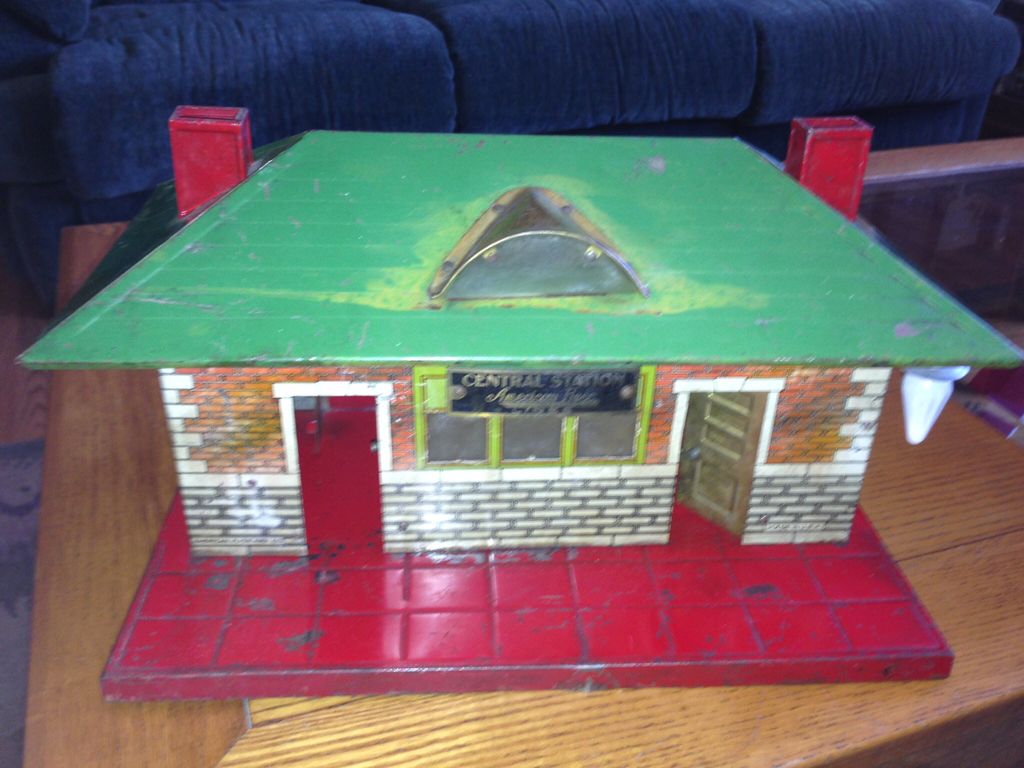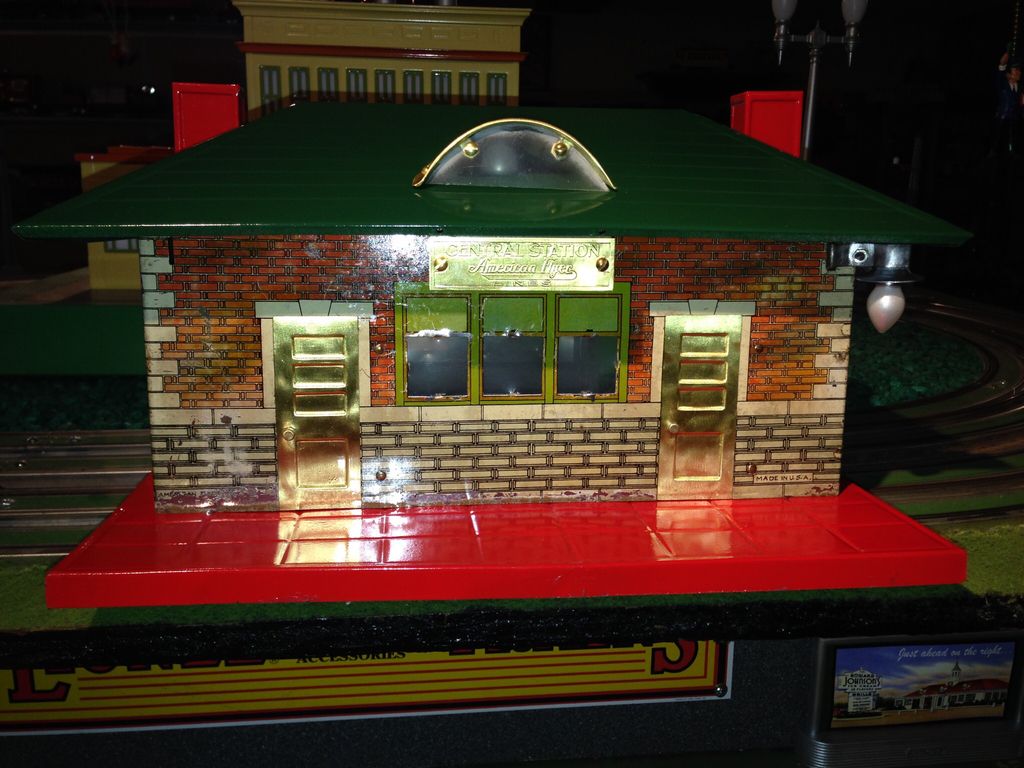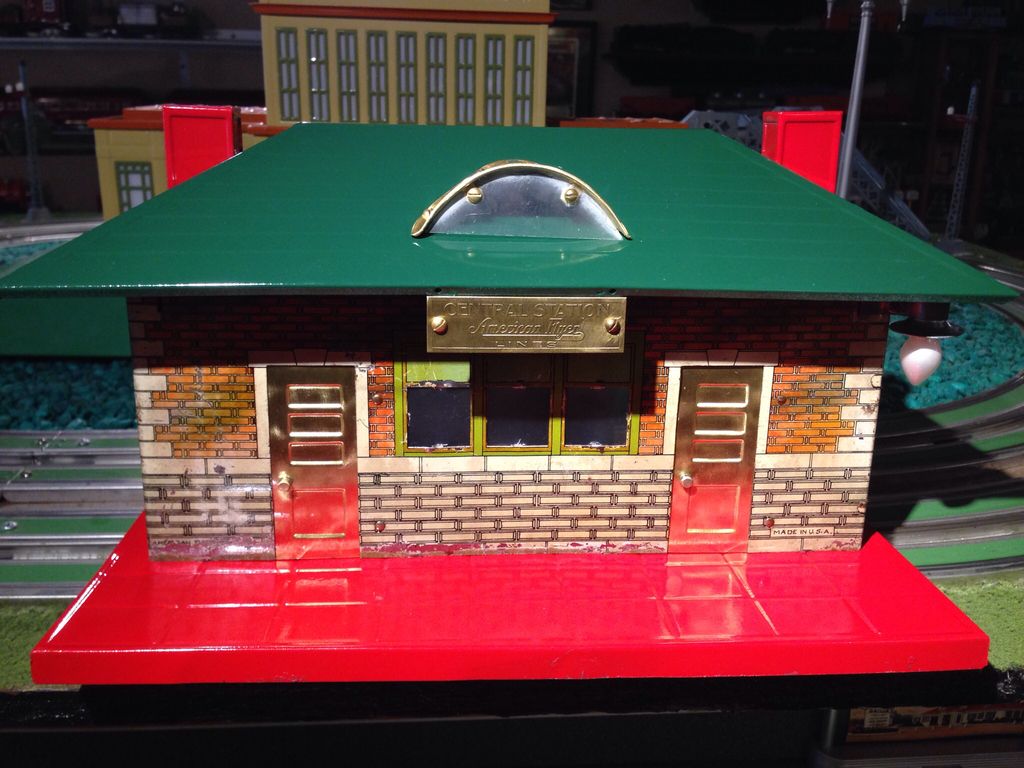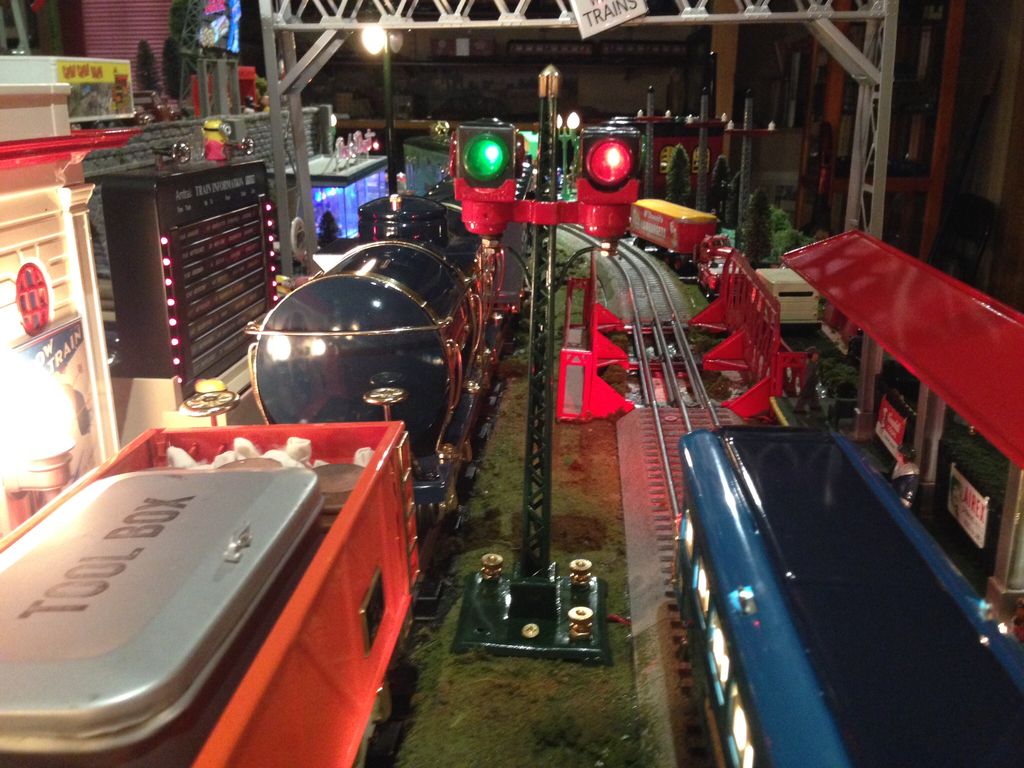Does anyone know why or how it is that old tinplate enamel is often badly flaking or peeling while the lithography on the same piece is not? Even Ives with its chronic severe paint flaking usually has no problems with the lithography. They are applied to the same tinned sheet metal surface. Was there some kind of a prep to the lithographed surface, while the enameled surfaces seem to have been unprimed?
It's pretty clear why the enamel flaked: I'm wondering why the litho didn't.
d
Great job Chris - what a rich color there. Correct me if I'm wrong somebody, but isn't the chemical make-up of the litho and enamel different? I think the lithography is more of an ink, and maybe the enamel (being a hard paint coat) isn't as flexible over the long lifetimes of the old tinplate.
You've got it right, ink and paint are two different things.
Similar on occasion, but different in chemical makeups (varies), application processes, curing, pigments & counts, end results, etc.
I think of ink for achieving the best look and/or high detail.. And paint as a fast, low cost, good looking protection for the material its applied to.
Printing inks are normally very thick, sticky, slow to dry out fully, and don't shrink or pull much as they cure. Thick like a gum-rubber based artistic oil paint, but with an extremely high pigment count. That count allows it to be spread very thin, but still be quite opaque. This all allows finer detail as well.
Most paint starts thin, and goes on thicker, then gets hard as a rock. Shrinking and pulling varies, but most do shrink and pull, more than inks. Some spread to a comparative thinness, but most paint is thicker once applied fully (primers and coats [coats due to lower pigment count in paint.]) .
Paint is usually much cheaper initially, can be started sooner, universal (used on other items easily[low start up]) .
But over time printing can often produce a superior product, and becomes more competitive with the paints. Basically printing has a higher initial startup cost. But once the transfer material is prepared, it can be normally be re-used again and again till the material used for the block/screen/etc wears out.
Clean up? Paint is easier except for some alkyd and epoxies.
Printing ink is like a water and chemical resistant automotive CV grease. You wipe it, but it just laughs at you as it tears your paper towel up...got to keep a real towel with you at all times...(42 )
)






